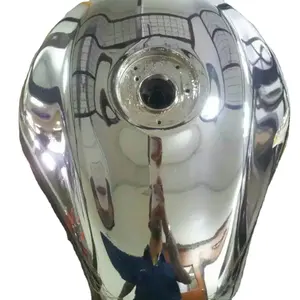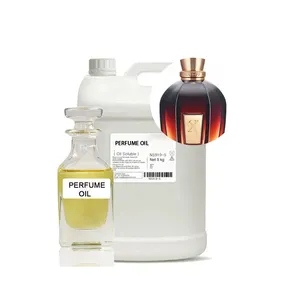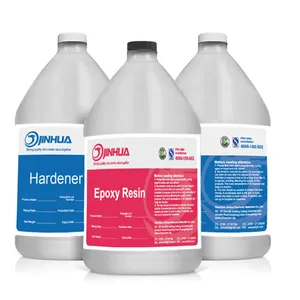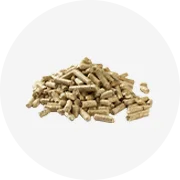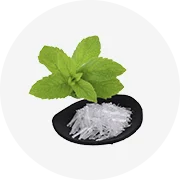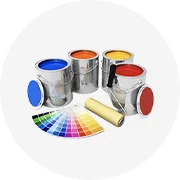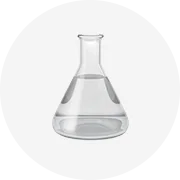Populaire dans votre secteur d’activité
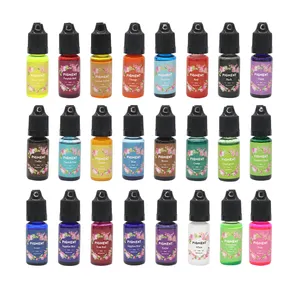



Roosbang — pigment de couleur pour bijoux, transparent, pour résine époxy et UV, bricolage, artisanat fait à la main, 24 couleurs, 10ml, offre spéciale
6,13 € - 7,06 €
Commande minimale: 1 pièce






Qualité cosmétique éblouissant caméléon aurora pigment blanc irisé fard à paupières aurora caméléon poudre pigment
2,05 € - 2,42 €
Commande minimale: 50 grammes
Expédition par pièce: 0,5291 €







Poudre de pigment de perle de mica en vrac naturel de 30 couleurs personnalisée Pigment nacré coloré pour la fabrication de savon Poudre de mica colorée
Prêt à être expédié
5,10 € - 6,49 €
Commande minimale: 10 pièces
Expédition par pièce: 3,75 €







Ensemble de poudre de mica en bouteille de 24 couleurs non toxique recouvert de mica naturel Pigment de perle de résine époxy pour l'artisanat de savon de Slime d'art de résine
0,2321 € - 0,3342 €
Commande minimale: 300 pièces







Pigment en poudre de mica de couleur naturelle en vrac de vente chaude en gros pour l'artisanat en résine époxy
0,6404 € - 0,9189 €
Commande minimale: 300 pièces







Cncnmi — poudre à ongles ornée de perles pour peinture multicolore, Pigment caméléon de couleur magique, pour résine époxy
0,1485 € - 0,1857 €
Commande minimale: 5 grammes
Expédition par pièce: 27,92 €






Pigment de changement de couleur, 20 couleurs, pour peinture de voiture, caméléon, fournitures chinoises
0,1857 € - 0,2321 €
Commande minimale: 100 grammes






Changement de couleurs Caméléon Pigments nacrés en poudre de Chine PL20818D
156,85 € - 175,41 €
Commande minimale: 1 kilogramme






Poudre de titane de poudres de pigments nacrés multicolores de mica extra métallique, fournisseurs de Chine
6,97 € - 7,43 €
Commande minimale: 1 kilogramme
Expédition par pièce: 213,38 €






Meilleure vente CLF Pigment nacré non toxique pour manucure de l'usine de la Chine
4,74 € - 6,41 €
Commande minimale: 1 kilogramme





Différentes couleurs de peinture de voiture, perles à tremper, pigment nacré, pour automobile, vente en gros, livraison gratuite, chine
74,25 € - 139,22 €
Commande minimale: 1 kilogramme






Pigment nacré diamant rose mica couleur poudre perle pigment fabriqué en chine
13,93 € - 23,21 €
Commande minimale: 25 kilogrammes
Recherches associées:
carreaux de caoutchouc pigmentpigment nacré fabricant de porcelainefabricant de pigments nacréspigment nacré blanc argentépigment nacré rougepigment nacrécouleur décalant pigments nacréscouleur pigment nacrépigment nacré automobilecouleur or pigment nacrépigment nacré pour cosmétiquepigment nacré de qualité cosmétiquearc-en-ciel pigment nacrépigment nacré doréinterférence pigment nacré






Poudre de paillettes d'or de poussière de lustre comestible de pigment de qualité alimentaire pour les nutraceutiques d'ours gommeux de gâteau
9,28 € - 37,12 €
Commande minimale: 1 kilogramme






Poudre de Mica métallique scintillante colorée, Pigment de perle pour l'artisanat en résine/sol époxy/cosmétiques/Nail Art, vente en gros
9,75 € - 13,93 €
Commande minimale: 1 kilogramme






Pigment nacré de qualité cosmétique, 50g, poudre de mica, pour rouge à lèvres, brillant, ombre à paupières, fabrication de balles de bain
8,36 € - 8,76 €
Commande minimale: 1 kilogramme






CNMI – poudre de Mica, colorant de résine époxy, Pigments de poudre naturelle, Pigment nacré de qualité cosmétique pour la fabrication de savon de bougie en résine époxy
0,0929 € - 0,1857 €
Commande minimale: 5 grammes
Expédition par pièce: 19,03 €






Kcolorée — peinture de voiture, Pigment nacré, couleur bonbon
0,3249 € - 0,7889 €
Commande minimale: 10 pièces






100 couleurs holographiques mica poudre de qualité pour savons bougie colorant savon fabrication résine pigment mica poudre de qualité alimentaire
0,2506 € - 0,2785 €
Commande minimale: 1 sac
Expédition par pièce: 138,29 €






Pigment de perle personnalisé 56 couleurs poudre de pigment de qualité cosmétique poudre de pigment de mica pour brillant à lèvres fabrication de savon résine
0,1857 € - 0,2506 €
Commande minimale: 30 pièces
Expédition par pièce: 4,01 €






En vrac Shimmer Cosmétique Nacré Mica Poudre de Pigment
0,0465 € - 0,065 €
Commande minimale: 500 grammes






Pigment de Changement De couleur Nacré Caméléon Pigment pour Ongles Résine Peinture Cuir Revêtement d'encre
2,93 €
Commande minimale: 100 pièces
Expédition par pièce: 37,59 €






Pigment caméléon poudre de perle de qualité industrielle poudre de pigment doré pour peinture de voiture
0,1393 € - 0,1857 €
Commande minimale: 10 grammes






Pigment nacré coloré pour peintures cosmétiques encres revêtements plastiques décoration etc.
32,49 €
Commande minimale: 1 kilogramme
Expédition par pièce: 48,43 €






Shixin — Pigment nacré synthétique, cristal de 5mm, pour revêtement, peintures, encre et plastique
6,50 € - 18,57 €
Commande minimale: 25 kilogrammes






Jinrunli Acheter qualité cosmétique hyper changement de couleur caméléon effet métallique perle pigment duochrome
0,2321 € - 0,2785 €
Commande minimale: 100 grammes
Expédition par pièce: 0,2692 €






Pigment en poudre de mica nacré de haute qualité pour résine époxy colorant colorant
0,5476 € - 0,7889 €
Commande minimale: 50 pièces






Poudre de Mica/Perle Parfaite Poudre/Pigment Nacré
3,62 € - 13,93 €
Commande minimale: 500 kilogrammes






Pigment de mélange de peinture de voiture, poudre de Mica à fort changement de couleur, Super caméléon personnalisé
1,58 € - 1,95 €
Commande minimale: 10 grammes






Meilleure vente peinture perlée poudre de mica pigment de peinture nacrée pigment duochrome
0,0093 € - 0,0279 €
Commande minimale: 50 grammes






Nouveau Produit Offre Spéciale Diamant Argent Verre Flocon Metashine Nacré Écailles de Verre Metashine Pigment
0,2627 € - 0,5263 €
Commande minimale: 100 grammes





Pigment nacré diamant rose couleur mica poudre de pigment de perle HUE-315LR
48,27 € - 49,19 €
Commande minimale: 1 kilogramme






Poudre colorante résine époxy, pigment doré, colorant nacré, 20g
9,29 € - 18,57 €
Commande minimale: 1 kilogramme






Yunzhu – poudre de perles de Mica, cosmétiques blancs purs, Pigments nacrés
16,62 € - 27,75 €
Commande minimale: 1 kilogramme






Pigment de poudre de Mica nacré d'or de prix bas en gros d'usine pour l'encre de Bouddha
3,72 € - 4,65 €
Commande minimale: 1 kilogramme




Ventes directes d'usine Cosmétique Mica Dioxyde de Titane Pigment Nacré Rouge Brun Satin Mica Pigment
13,93 € - 18,57 €
Commande minimale: 25 kilogrammes






Phoera — poudre de diamant argent, maquillage, pigment en verre Borosilicate
240,38 € - 464,05 €
Commande minimale: 1 kilogramme






Cosmétique 24 couleurs scintillantes blanc interférence fantôme mica pigment Mica poudre perle Pigment nacré Pigment
25,99 € - 27,85 €
Commande minimale: 1 kilogramme






Vente en gros de poudre de mica scintillant poudre de pigment de perle de couleur scintillante poudre de mica en vrac pour la fabrication de bougies
11,13 € - 13,82 €
Commande minimale: 1 kilogramme






OEM ODM pot d'emballage nacré Pigment perle mica poudre pour peinture colorant savon fabrication vernis à ongles bougie en résine époxy
0,1393 € - 0,1764 €
Commande minimale: 1 sac






Pigment de résine époxy, pigment gris argenté, nacré, 20g
12,07 € - 24,14 €
Commande minimale: 10 kilogrammes
Meilleures catégories
Concernant pigment nacré chine
Découvrez la collection complète de pigment nacré chine sur Alibaba.com. Ils sont disponibles sous des formes naturelles et synthétiques. pigment nacré chine sont appliqués dans un éventail d'industries pour un groupe de minéraux, ce qui les rend polyvalents.
pigment nacré chine sur Alibaba.com sont bien adaptés aux secteurs de l'isolation et des cosmétiques. Ils sont utilisés dans les crèmes, les fonds de teint, les ombres à paupières, etc. Ces produits permettent une meilleure couverture des écrans solaires et des hydratants car ils ont une sensation douce et lisse. Ce sont des substances de haute pureté dans de nombreuses variantes comme la muscovite, la phlogopite, etc. Ils sont disponibles dans des teintes blanc laiteux et métalliques, ce qui les rend appropriés pour les pigments nacrés. Ils n'ont pas de toxines car ils sont exempts de métaux lourds. Ils sont utiles dans l'industrie du caoutchouc comme lubrifiants et sont pratiques pour les colorants dans les peintures et réduisent la pénétration de l'eau et les intempéries.
pigment nacré chine sont disponibles sous forme de plaques, de tubes et de flocons en poudre. Décorez les maisons avec des panneaux de fenêtres ornés et des cadres comprenant ces produits. Ces substances sont résistantes aux acides et aux alcalis, ce qui les rend stables pour une utilisation dans des applications à haute température et haute tension. Ils sont ajoutés aux céramiques en raison de leur haute résistance à la chaleur. Ces produits sont légers et relativement doux, ce qui en fait le choix idéal pour les gaines isolantes. Ils agissent comme agents de remplissage et de renforcement dans la fabrication de produits en plastique et de papier.
Saisissez des offres rentables sur pigment nacré chine sur Alibaba.com. Les fournisseurs et grossistes enregistrés offrent d'excellents produits à des prix compétitifs et avantageux pour tous les types de budget. Bénéficiez des avantages supplémentaires des réductions incroyables sur les achats en gros sur le site.
pigment nacré chine sur Alibaba.com sont bien adaptés aux secteurs de l'isolation et des cosmétiques. Ils sont utilisés dans les crèmes, les fonds de teint, les ombres à paupières, etc. Ces produits permettent une meilleure couverture des écrans solaires et des hydratants car ils ont une sensation douce et lisse. Ce sont des substances de haute pureté dans de nombreuses variantes comme la muscovite, la phlogopite, etc. Ils sont disponibles dans des teintes blanc laiteux et métalliques, ce qui les rend appropriés pour les pigments nacrés. Ils n'ont pas de toxines car ils sont exempts de métaux lourds. Ils sont utiles dans l'industrie du caoutchouc comme lubrifiants et sont pratiques pour les colorants dans les peintures et réduisent la pénétration de l'eau et les intempéries.
pigment nacré chine sont disponibles sous forme de plaques, de tubes et de flocons en poudre. Décorez les maisons avec des panneaux de fenêtres ornés et des cadres comprenant ces produits. Ces substances sont résistantes aux acides et aux alcalis, ce qui les rend stables pour une utilisation dans des applications à haute température et haute tension. Ils sont ajoutés aux céramiques en raison de leur haute résistance à la chaleur. Ces produits sont légers et relativement doux, ce qui en fait le choix idéal pour les gaines isolantes. Ils agissent comme agents de remplissage et de renforcement dans la fabrication de produits en plastique et de papier.
Saisissez des offres rentables sur pigment nacré chine sur Alibaba.com. Les fournisseurs et grossistes enregistrés offrent d'excellents produits à des prix compétitifs et avantageux pour tous les types de budget. Bénéficiez des avantages supplémentaires des réductions incroyables sur les achats en gros sur le site.

